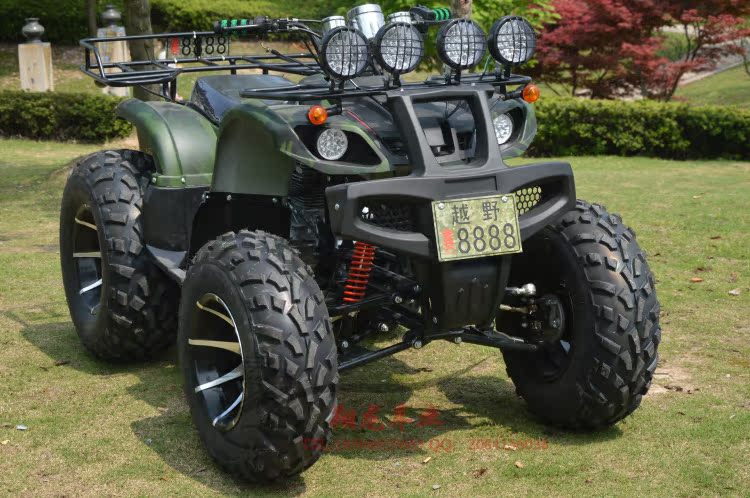Whoops can make or break a race, or a fun day of riding for that matter. They are also the hardest terrain to master, as there are no two alike, and can change over the course of a day.
We spoke to Levi Marana, who races for Temecula Motorsports, for input and a demonstration on the subject. He pointed out one thing to keep in mind when attacking any kind of whoop section; “Stay loose and let the bike work under you so you don’t get tired, and adjust your style for different types of whoops.” He added that a rider should always hit them straight on, stay on the gas once committed, and lean back to keep the weight on the rear tires.
SUPERCROSS STYLE WHOOPS
Supercross whoops are the most challenging since they tend to be very large. If the peaks are spaced close enough together, a rider may be able to skim over the tops of the bumps. But once committed, do not hesitate, as loss of control or a crash will result if the front end of the ATV drops.
Other supercross sections will need to be tackled in a rhythm (rhythm sections). There are infinite variations of rhythm sections. For example, it may be best to double all the whoops. Other rhythm sections may require singling the first whoop, then doubling the middle ones, and tripling out. The famous Loretta Lynn’s “Ten Commandments” whoop section is well known for its ever-changing combinations of rhythms every year.
WASHBOARD OR SKIMMING WHOOPS
Probably the easiest of whoops, these are usually more evenly spaced and a rider can keep the throttle pinned through them. Marana prefers coming into these obstacles a gear high so he can power out of them.
BRAKING BUMPS
Staying in control through these whoops that develop on the entrance of a corner may be as simple as hanging on tight. However, as they worsen, a rider may have to coast into the corner with constant throttle through the bumps and brake late. The braking bumps can become so severe, a mix of techniques may be needed to negotiate them fast and under control.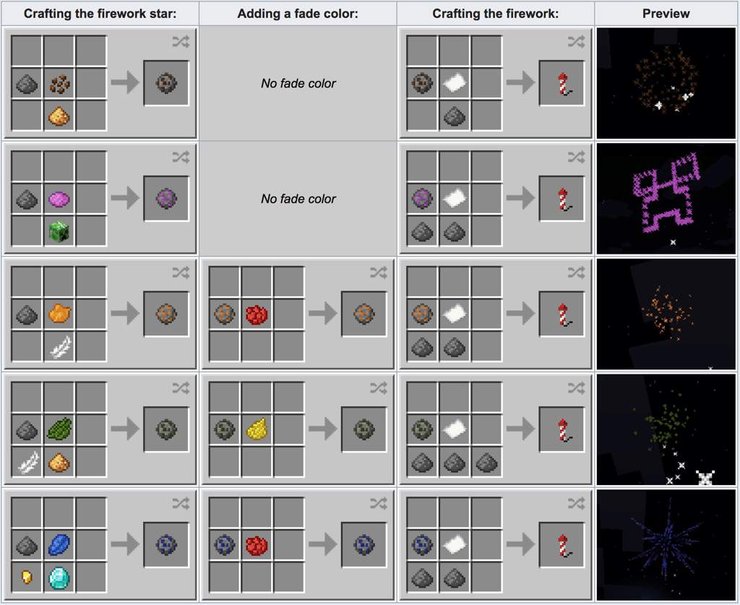 One such example would be to stab the brakes before the whoops, then let off the brakes and apply steady throttle to avoid suspension packing. Follow with late braking in the corner.
One such example would be to stab the brakes before the whoops, then let off the brakes and apply steady throttle to avoid suspension packing. Follow with late braking in the corner.
ACCELERATION BUMPS
Acceleration whoops develop on the exit of a corner or at the landing of jumps. It’s best to negotiate them like any other bump section. Keep the front-end light and power through them. However, when rough terrain develops after a jump, it may be necessary to begin jumping farther to clear the whoops. Another method, if possible, would be to jump shorter to allow setting up for rough stuff. If neither is really possible, then be prepared to hang on and stay steady on the throttle upon landing.
DESERT OR TRAIL WHOOPS
These whoops will vary the most since they develop naturally throughout a race. They can be a mix of all the whoop styles, and Marana says, “You attack desert whoops one-at-a-time and keep the quad under control.”
CONCLUSION
Pounding through whoops can be extremely fun and offer a rewarding sense of accomplishment.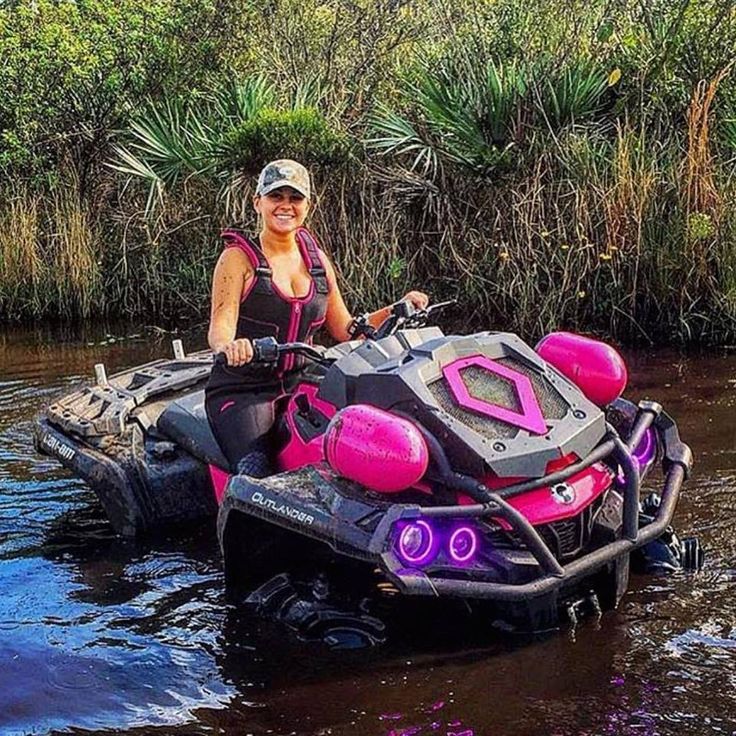 But they can also be the cause of some of the worst wrecks. So, as with hitting jumps, master this obstacle in steps and don’t get in over your head. Practice and apply the appropriate techniques to develop a sense of how to best to negotiate the terrain effectively and safely. Soon, experience will take over and properly negotiating that next bump ahead will be automatic!
But they can also be the cause of some of the worst wrecks. So, as with hitting jumps, master this obstacle in steps and don’t get in over your head. Practice and apply the appropriate techniques to develop a sense of how to best to negotiate the terrain effectively and safely. Soon, experience will take over and properly negotiating that next bump ahead will be automatic!
Here you have it: a plethora of pros giving you their hard-won riding tips, secrets, and advice. They’ll fill you in on cornering, jumping, riding the whoops and good brake technique. Whether you are a casual rider or hard-core racer, these pro tips can improve your riding skills. Take what you read here and utilize the tips on the track and trails. Whether you race motocross or cross-country, shred dunes or just explore the trails, what the pros here have to say can help you ride better.
DOUG GUST,
Motocross Racer
JUMPING
When jumping, you want to keep the bike low. There are two reasons for that. One is, if you’re high, it’s that much longer before the wheels are on the ground and you’re moving forward. So I like to stay low when I can.
There are two reasons for that. One is, if you’re high, it’s that much longer before the wheels are on the ground and you’re moving forward. So I like to stay low when I can.
The second reason is you don’t want to get hurt! You’re there to win a race, not to be freestyling! I watch the guy in front of me carefully, because if it looks like he’s going to back off at the last second and not take the jump, I have to be able to get around him and still have the speed to take the jump successfully.
You want to use your body, both your arms and legs, as suspension. Use them to absorb landings as well as to preload the bike on the ramp. Don’t jump stiff.
Basically, use your head. It’s real easy to get hurt if you come up short on a double or get too crazy. It’s good to practice jumping in a non-race environment.
BRAKING/CORNERING
It’s true that whoever can out-brake the competition will win a race. What that means is, the later you can brake into a corner, the better. Don’t brake too late, of course, or you’ll find yourself eating a hay bale. So you go in fast, brake late, accelerate fast, and you lose less speed.
Don’t brake too late, of course, or you’ll find yourself eating a hay bale. So you go in fast, brake late, accelerate fast, and you lose less speed.
Keep your body weight back, way back, when braking. Brake equally, both front and rear, and don’t lock them up. Stay smooth.
WHOOPS
Like braking, keep your weight back on the quad. Try to stay balanced with the balls of your feet centered on the pegs. Suspension setup is important. Too slow a rebound setting and the shocks will pack; they won’t return to full travel in time for the next whoop. If it’s too fast, you can go over the bars. So you need to tweak your shocks before you race.
DOUG’S QUAD
Keep your quad in good shape and well-tuned. My Nacs Z-400 is running great; Yoshimura has done such a great job with it. Whether you work on your bike yourself or have a shop mod it, keep it tuned and you’ll have less of a chance for mechanical failures.
SHANE HITT,
Motocross/TT Specialist
JUMPING
First off, stay smooth and try to land on the downside of every jump. There are different kinds of jumps and I use different strategies for them. On doubles, I’ll go faster and get higher to make sure I clear the second jump. But for tabletops and singles, I try to stay low. Airtime is lost time except for double jumps. You want to get back on the ground and get the tires moving you forward.
There are different kinds of jumps and I use different strategies for them. On doubles, I’ll go faster and get higher to make sure I clear the second jump. But for tabletops and singles, I try to stay low. Airtime is lost time except for double jumps. You want to get back on the ground and get the tires moving you forward.
BRAKING/CORNERING
In TT and motocross, brake late. Usually, the harder you go in, the better off you are. Stay smooth and in control. Roll on the throttle. The best thing is not to follow the racer in front of you. If he is going wide in a turn, go inside and swoop him. And if he takes the inside, brake later in the corner, keep your speed up and try to cut him off from the outside line.
Never lock your brakes in TT. By far the best thing to do is brake in a straight line. I’ve found that if you’re sliding, you lose too much distance and time. Go fast and brake hard while still going straight. If you use the rear brake and slide, it actually takes longer for the bike to slow down, and you’re setting yourself up to be passed.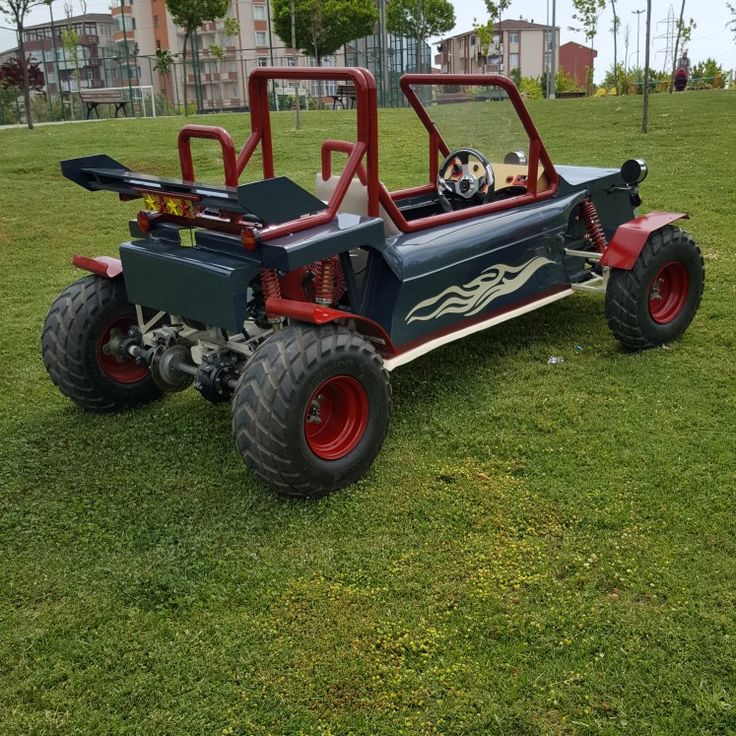
WHOOPS
Some whoops require a rhythm approach while others you want to skip over at speed. For whoops that are deeper and further apart, it’s best to do them in a smooth, rhythmic way. But for whoops that are shorter and closer together, you want to take them faster and skip across the top. If you have a run at whoops, it’s usually better to take them as fast as possible. I know that sounds scary, but it works. Whereas if the whoop section is right after a corner, you may not have time to get up to speed, and you’ll want to use a more rhythmic style to stay fast and smooth.
SHANE’S QUAD
I’m on a Walsh-framed 250R with a brand-new engine. I was wondering if the two-strokes could keep up with the four-strokes, but Jeremiah Jones has been dominating this year, so it looks like they can. I like the Pro Production class, though. I think that’s where the sport may be headed.
SCOTT KILBEY,
Cross-Country 4×4 Racer
CORNERING/BRAKING
Cut the corners as close as possible. On a 4×4 the front wheels will push and dive in, so you need to put maximum body weight to the opposite side. But I don’t use the 4WD too much, unless there are extreme conditions, heavy bottlenecks on hills, that sort of thing. So in 2WD you can swing a corner a little wider and let the back end swing around. Come into the corner at speed and tap the front brakes to plant the front end, then tap the rears to get the rear wheels sliding. At about the halfway point in the turn, get off the brakes and back on the gas. It takes practice to keep your momentum up in a turn.
On a 4×4 the front wheels will push and dive in, so you need to put maximum body weight to the opposite side. But I don’t use the 4WD too much, unless there are extreme conditions, heavy bottlenecks on hills, that sort of thing. So in 2WD you can swing a corner a little wider and let the back end swing around. Come into the corner at speed and tap the front brakes to plant the front end, then tap the rears to get the rear wheels sliding. At about the halfway point in the turn, get off the brakes and back on the gas. It takes practice to keep your momentum up in a turn.
WHOOPS
For whoops sections on a cross-country course keep your weight back. Let the front end float over the whoops. That can be hard on a heavy 4×4 quad with no clutch, so it’s body weight back along with keeping on the throttle. You want to try to skim across the top of whoops but that’s hard on a 4WD quad. If you can’t skim, if the whoops are big, just roll smooth as you can. In the smaller whoops, power through them. Be careful because the whoops can toss you and you don’t want a heavy 4WD quad landing on you.
Be careful because the whoops can toss you and you don’t want a heavy 4WD quad landing on you.
On my Kawasaki Prairie, I keep the front shocks stiff. The rear is fine, if anything I’ll set it to be soft just to save my body the punishment.
MUD
Stay clean! Stay in front. Pick your lines well. In a tight pack, you just have to take the mud and deal with it as you set up your passes. Usually by the second lap the pack has thinned out some and the mud won’t be as bad. Be prepared to pass because you don’t want to spend any more time than you have to being showered with mud. Make sure you have enough tear-offs or roll-offs!
WATER CROSSINGS
Ease into the water a bit slower; don’t just charge into a water crossing the first time. There could be rocks, logs, or it could just be deeper than you thought. You don’t want to drown your quad or go over the bars in water, or tear your bike and body up. Go a bit slower in, then accelerate out.
TIGHT TREE SECTIONS
If there are two trees you have to pass between, don’t look back and forth between the two trees; focus on one and get as close as you can to that one. Then focus on the trail ahead. Peripheral vision is critical in tight spots. You have to be able to peripherally look at trees while you also watch the trail. It’s good to have strong upper body strength to maneuver a utility quad through tight sections.
Then focus on the trail ahead. Peripheral vision is critical in tight spots. You have to be able to peripherally look at trees while you also watch the trail. It’s good to have strong upper body strength to maneuver a utility quad through tight sections.
SCOTT’S QUAD
I’m on a Kawasaki-sponsored Prairie 4×4, hopped up by Penland Brothers Racing. It’s a 650 frame but I’m using a V-Force 700 engine. It’s actually the 650 cases with 700 internals.
DANA CREECH,
Motocross Racer
JUMPING
Rule number one: don’t land on anyone! I learned that fast, and the hard way. There’s no quicker way to get knocked out of a race. But you just want to pick a good line. If you’re unsure, watch the pack, watch the leaders, and see where they’re jumping. Follow for a while and figure out the good line. Then set them up and pass them over a jump.
BRAKING/CORNERING
Body english is the key to cornering well. You want to lean hard into those corners! That and good throttle/clutch control. You should be leaning hard but still stay smooth around a corner. It just takes practice.
You should be leaning hard but still stay smooth around a corner. It just takes practice.
I use mostly my front brakes as I enter a corner. I always stay on the throttle hard, so my brakes take a beating. I push the rear with the throttle while dragging on the front brakes. I’ll use the rears, too, if I have to. I did that a lot when I was new but now I find that I use mostly the front brakes.
WHOOPS
You want your butt as far back as you can get it. Way back out there! Keep the front end up and light. You do that with throttle and body english. Your arms should be fully extended. You want to avoid pogoing through the whoops. I run PEP shocks and I’ve never even had to mess with them. But if you’re having problems you might want to slow down the rebound a bit.
DANA’S QUAD
CRF-450 engine with a Walsh frame.
CHAD DUVALL,
Cross Country Racer
CORNERING/BRAKING
Corners to me are getting from point A to point B as fast as possible, so I go into the corners hard and fast. I try to hold on to the last second to brake. It’s how you pick up a second here, a second there, as you outbrake your opponents. Frankly, it’s one of the best ways to win a race, if you’re quick in the turns. You need to use the turns in a cross-country race to make up time.
I try to hold on to the last second to brake. It’s how you pick up a second here, a second there, as you outbrake your opponents. Frankly, it’s one of the best ways to win a race, if you’re quick in the turns. You need to use the turns in a cross-country race to make up time.
Brake before the corner and be gassing it through the turn. Using your front brakes is better. I could lose my rear brakes and still finish a race in good position, but if I lose my fronts I just head for the trailer.
WHOOPS
Be aggressive and fast. Lean back and try to wheelie from whoop to whoop. I use Elka shocks and I keep them stiff with a good bit of rebound dialed in. Remember to stay smooth, because the smoother you are, the less fatigued you’ll get. You’ll need that strength at the end of the race when everyone else is getting tired. The fresher you, the faster you can go at the end.
MUD
Have fun and enjoy it. Everyone else is as miserable as you so you may as well have some fun.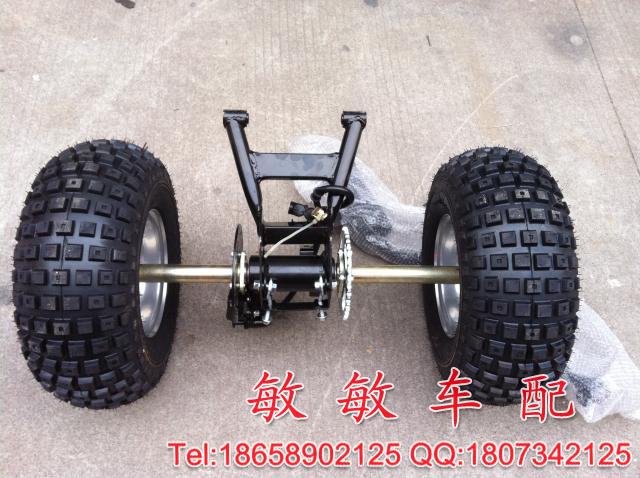 Some guys fall apart in the mud; they can’t handle it.
Some guys fall apart in the mud; they can’t handle it.
WATER CROSSINGS
Be smart if you’re crossing a deep water hole. It’s better to lose two seconds going in a bit slower than sitting there dead with a drowned engine or broken A-arm from hitting an underwater obstacle.
TIGHT TREE SECTIONS
Never look to the sides or at the trees. Stay focused on the trail and use your peripheral vision. I guarantee you that if you look at a tree you’ll end up clipping it. Keep your arms tucked in. Just remember that the quad will fit on the trail, so keep the bike under control and focus on getting from A to B as fast as possible.
CHAD’S QUAD
I’m on a 400EX prepped by Four-Stroke Tech, outfitted with White Bros, MSR and Maxxis. It’s definitely fast, I like riding the four-strokes, and I’ll be hitting a lot of races this year on it.
You agree that the maximum speed will be limited for safety reasons
ATVs must be operated by persons over 16 years of age.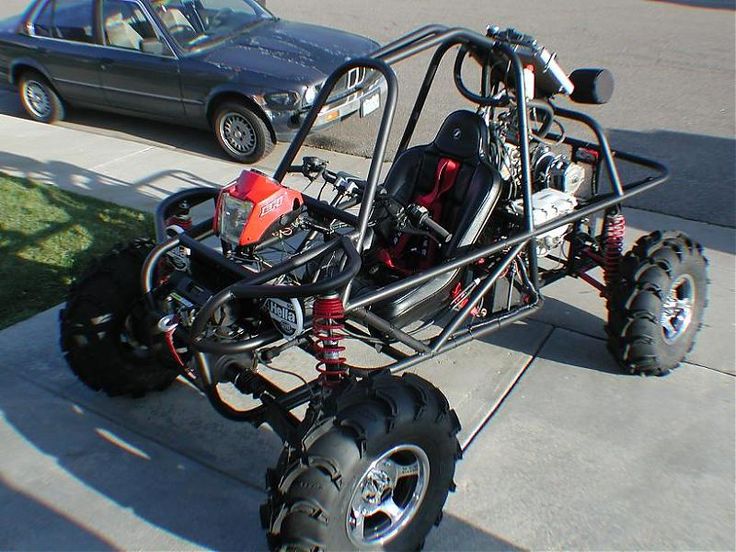
The total load on the ATV must not exceed 150 kg.
While driving, the driver must firmly hold on to the steering wheel, the passenger on the special handles.
When cornering, move (tilt) the body in the direction of the turn.
When tilting the ATV, move (tilt) the body in the direction opposite to the slope.
Always keep your feet on the footrests when moving, even when leaning over.
We provide a free ATV driving instruction before you start using it.
If you notice fluid leaks and/or other problems, stop the engine immediately and notify your instructor.
If you detect the operation of warning signs on the instrument panel (during the initial briefing, you will be shown control devices that you should pay attention to throughout the trip), immediately turn off the engine and inform the instructor.
Before and after the rental, the ATV is checked in your presence for breakdowns and damages, after which the acceptance certificate is signed.
Ride on a quad bike, always wearing helmets only, protective suits are provided free of charge on request.
In the event of a breakdown or accident, inform the instructor or contact him by phone.
If the ATV is damaged due to your fault, you pay for the cost of repairs and spare parts.
The time spent during the trip to fix problems that occurred through your fault is not compensated.
ATV must be instructed before use;
You agree to follow the speed limit set by the guide (instructor).
Do not succumb to the provocations of other citizens to participate in the race; clashes and other actions that can directly or indirectly cause damage to property and citizens;
Do not interfere with your actions or omissions to comply with these rules.
Drive onto highways and other public roads.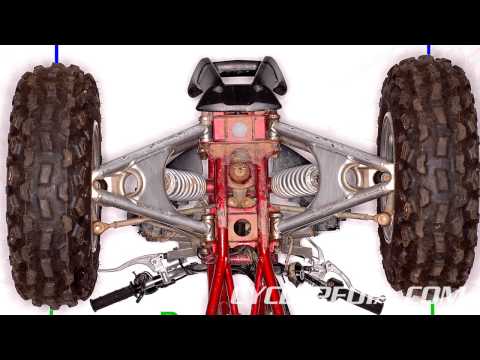
To tow other ATVs, or any other vehicles.
Leave ATV unattended.
Crossing deep water obstacles, driving over fires and areas with smoke or open flames is prohibited.
Gear shifting without stopping the machinery.
Drunk or drugged ATV riding.
Intentional collision with other ATVs.
Intentional collision with obstacles.
Provoking others to collide.
Overtake the instructor and the ATVs in front.
Deliberately fall behind the convoy and then overtake the convoy at high speed.
Do not follow the instructions of the instructor.
Touch moving parts such as wheels, drive shafts, variator pulleys, etc.
Talk aggressively, use profanity, and do anything that might disturb the people around you.
• Do not operate the ATV without a properly sized crash helmet. It is also necessary to wear eye protection, (protective mask or goggles).
It is also necessary to wear eye protection, (protective mask or goggles).
• Do not consume alcohol or drugs before or while operating an ATV.
• Always follow the instructions and follow the Instructor's recommendations.
• Before each use, make sure the ATV is in good condition and safe to ride. Always follow the rules and recommendations for driving given in the instruction.
• Always use extreme caution and drive slowly when driving in unfamiliar terrain.
• Always keep both hands on the handlebars and both feet on the footrests while riding the ATV.
• Do not operate the ATV on uneven, slippery, damaged roads until you have learned and gained the practical skills necessary to control the ATV on such roads. Always be extremely careful when driving in such conditions.
• Do not operate the ATV on slopes that are too steep for the vehicle and for your experience. Practice on small descents before moving on to difficult ones.
• Always follow the appropriate instructions from the Instructor when entering the hill, check the road surface first, never enter the hill on a road that is too slippery or has a damaged surface. Shift your weight forward of the ATV, never suddenly open the throttle or change gears suddenly. Never drive up a hill at high speed.
Shift your weight forward of the ATV, never suddenly open the throttle or change gears suddenly. Never drive up a hill at high speed.
• Always follow the appropriate instructions from the Instructor when descending and braking on the hill. Inspect the road carefully before descending. Shift your weight back, never go down a hill at high speed. Avoid going downhill at an angle that could cause the ATV to lean to the side. Go straight down if possible.
• Always follow the appropriate Instructor's instructions for crossing inclines. Avoid slides on excessively slippery or damaged surfaces. Shift your weight to the side of the lift. Never turn the ATV around on a hill until you have mastered the turning technique. On level ground, avoid crossing steep hills whenever possible.
• To prevent the engine from stalling and the vehicle from reversing when entering a hill, use the appropriate gear and maintain a steady speed. If the engine stalls or the vehicle reverses, follow the Instructor's specific instructions.
• Always check for obstacles in the road before operating the ATV in unfamiliar terrain. Never try to overcome large obstacles on the ATV, such as large rocks or fallen trees. Always follow the Instructor's specific instructions for overcoming obstacles.
• Be careful when skidding or skidding when practicing at low speed on a flat, smooth road. On extremely slippery surfaces such as ice, drive slowly and be very careful to reduce the risk of slipping or skidding.
• Start decelerating some time before stopping.
• Be aware that wet brakes reduce stopping power. Check your brakes after getting out of the water, if necessary, wait a while for the pads to dry out.
• Always be sure there are no obstacles or people behind you when you turn.
• Never exceed the ATV's stated load capacity. The load must be properly placed and securely attached.
• Never start the engine on a slope, as this may cause damage.
• Observe age guidelines: children under 16 are not allowed to operate an ATV. Do not allow a person who does not know how to operate the ATV in a safe manner to operate the ATV.
Do not allow a person who does not know how to operate the ATV in a safe manner to operate the ATV.
• Avoid riding the ATV on paved roads, including driveways, sidewalks, streets and car parks.
• If you need to stop (frozen helmet glass, hands, etc.) do not wait for the group to stop. Raise your left hand up (stop signal for ATVs following you) and gently come to a stop.
The instructor has the right to stop the tour early in case of violation of these rules!!!
To prevent ATV riding from ending up in a long hospital room:
Do not drive too fast. A four-wheel drive ATV is not a car or a motorcycle. It doesn't respond as well to the driver as a car, it can't lean quickly into a corner like a motorcycle. Remember that when riding an ATV it is very easy to roll over on level ground or even crash into a tree at full speed. For example, if a stump comes across in a field under tall grass, the ATV can run into it, and then the rider will fly over the steering wheel, or at least hit it.
Never ride an ATV alone. It is best to ride with someone in a pair on two ATVs. There are a lot of situations when a partner is needed. For example, it is very difficult to put an overturned ATV on wheels, and if it covered you from above, then you won’t even be able to get out from under it alone. The second ATV can pull the first one out of the swamp or tow it to the camp in case of a breakdown.
When passing a difficult obstacle, it is better to get out of the saddle and, carefully working with the brake and accelerator, walk alongside. You should also not go too deep into the water - you can fill the motor.
Place both feet straight on the footrests and hands on the controls.
Start the engine, let it warm up. After that, holding the brake, engage the gear.
Select direction of travel.
Release the brake and slowly press the throttle with your right thumb to start moving.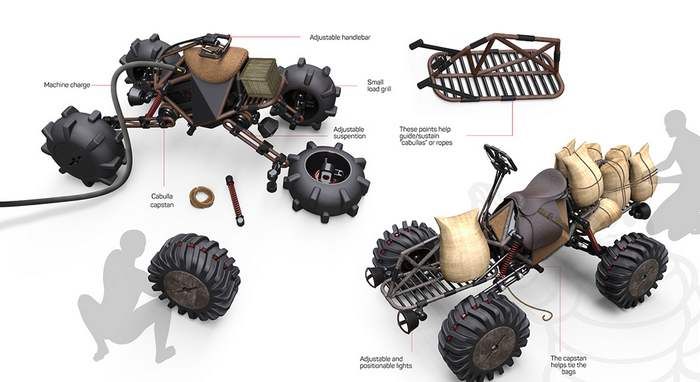 The speed of movement depends on how far the damper is open.
The speed of movement depends on how far the damper is open.
For starters, don't try to drive fast. It is better to learn how to maneuver, handle the brake system and throttle on level ground.
Turn the steering wheel in the desired direction. Tilt your upper body inward and rest your weight on the outside footboard. This will change the balance of traction between the wheels, and the turn will be made smoothly. Turns back are performed in the same way.
ATTENTION!!! ATVs are not designed to make sharp turns or turns at high speed!
When entering a slippery surface, slow down.
Avoid sharp and sharp turns, or the ATV will skid.
When skidding, turn the steering wheel in the direction of the skid and shift your body weight forward. Never slow down during a skid.
An all-wheel drive system can make driving on slippery surfaces much easier.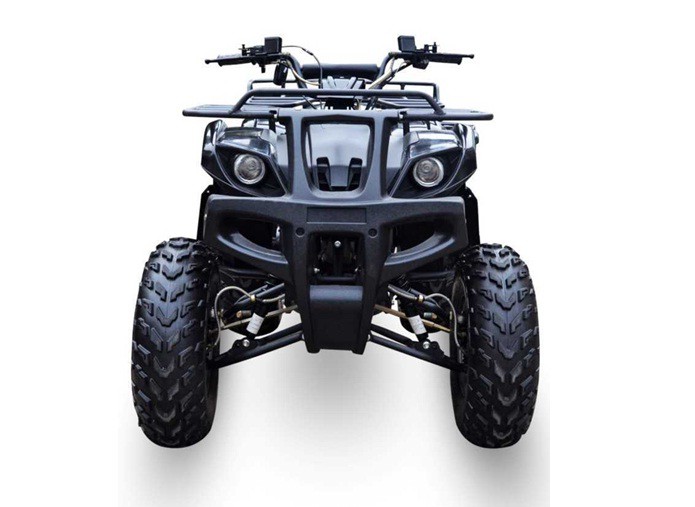
Climb up in a straight path.
ATVs are not designed for climbing steep hills (over 25°).
When lifting, keep both feet on the footrests and shift your body weight forward.
Drive at a steady speed with the throttle open.
When ascending, be fully prepared for an emergency.
If the ATV has completely lost forward speed, raise yourself up and apply the front brake. If there is a complete stop, apply the rear brake as well, and then set the gear selector to park.
If the machine rolls backward, it is necessary to get up and apply the front brake. After a complete stop, you can also apply the rear brake and move the gear selector to park mode.
ATTENTION!!! Crossing hills on an ATV is very dangerous! If possible, try to avoid hills when riding an ATV.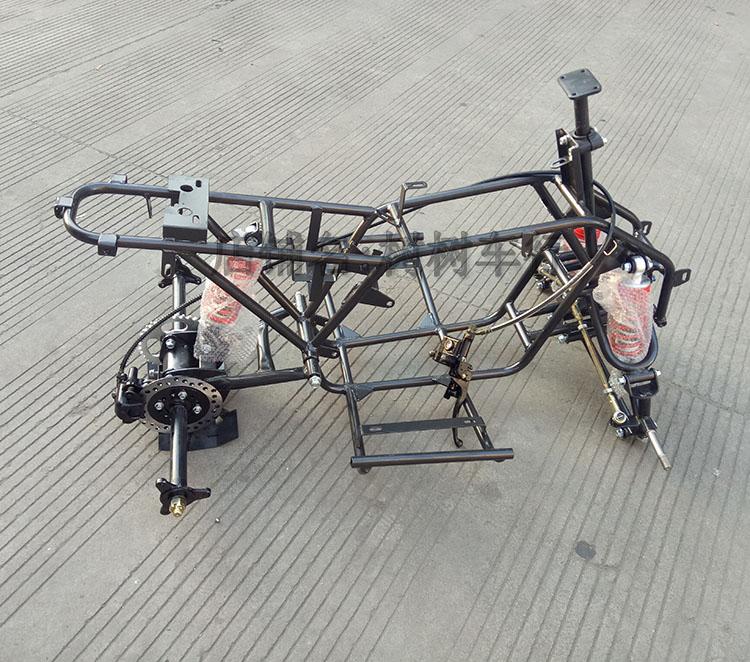 Any incorrect action while crossing a hill can cause serious injury, or even death!!!
Any incorrect action while crossing a hill can cause serious injury, or even death!!!
If you still need to cross a hill with an ATV, please follow these rules:
Drive at low speed.
Tilt your torso towards the hill to transfer the weight of your upper body towards the slope. But be sure to keep your feet on the footboards.
In order not to lose direction, the machine must be steered slightly uphill.
If the ATV begins to tip over, quickly turn the front wheel downhill or leave the vehicle immediately.
When descending a slope, you need:
Move in a straight line.
Shift your body weight to the rear of the machine.
Drive at a slow speed, applying the brakes lightly.
Know how to operate the rear auxiliary brake lever.
If the machine stalls while lifting, do not let it roll down.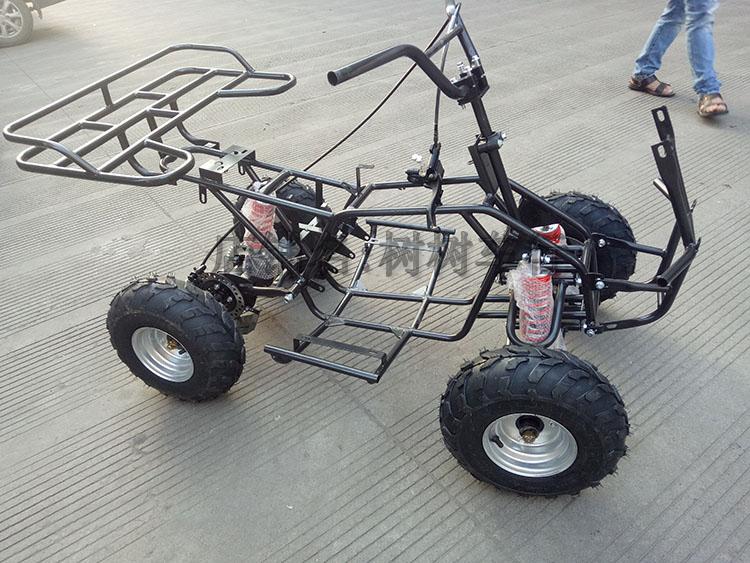 Do the following:
Do the following:
Stop and put the gear selector in park mode, raise yourself up.
Turn off the engine.
Get off the ATV on the side that is on top. If the ATV is pointing up in a straight line, then you need to get off on the left.
Stand at the top of the machine and turn the steering wheel fully to the left.
While holding the brake lever, place the shifter in first gear and allow the ATV to circle slowly to the right until the vehicle is across the slope or turns slightly down.
Shift the shifter to park and mount the ATV from the top side again, supporting your body weight.
While holding the brake lever, start the engine while shifting the gear selector to first gear.
After releasing the brake, drive slowly until the ATV is on level ground. Control the speed with the brake.
You can cross shallow water on your ATV (the depth should not exceed the level of the footrests). The following rules must be observed:
The following rules must be observed:
Before entering the water, assess the depth and speed of the current.
It is necessary to move the reservoir in the place where there is a gentle descent to the water.
Move slowly, avoiding rocks and other obstacles.
Dry the brakes after driving over water. To do this, lightly press the lever until the brakes start working correctly again.
• Do not operate the ATV without wearing an appropriately sized crash helmet. It is also necessary to wear eye protection, (protective mask or goggles).
• Do not consume alcohol or drugs before operating an ATV.
• Always follow the instructions and follow the Instructor's recommendations.
• Before each use, make sure the ATV is in good condition and safe to ride. Always follow the rules and recommendations for driving given in the instruction.
• Always use extreme caution and drive slowly when driving in unfamiliar terrain.
• Always keep both hands on the handlebars and both feet on the footrests while riding the ATV.
• Do not operate the ATV on rough, slippery, damaged roads until you have learned and gained the practical skills necessary to control the ATV on such roads. Always be extremely careful when driving in such conditions.
• Do not operate the ATV on slopes that are too steep for the vehicle and for your experience. Practice on small descents before moving on to difficult ones.
• Always follow the appropriate instructions from the Instructor when entering the hill, check the road surface first, never enter the hill on a road that is too slippery or has a damaged surface. Shift your weight forward of the ATV, never suddenly open the throttle or change gears suddenly. Never drive up a hill at high speed.
• Always follow the appropriate instructions from the Instructor when descending and braking on the hill. Inspect the road carefully before descending. Shift your weight back, never go down a hill at high speed. Avoid going downhill at an angle that could cause the ATV to lean to the side. Go straight down if possible.
Inspect the road carefully before descending. Shift your weight back, never go down a hill at high speed. Avoid going downhill at an angle that could cause the ATV to lean to the side. Go straight down if possible.
• Always follow the appropriate Instructor's instructions for crossing inclines. Avoid slides on excessively slippery or damaged surfaces. Shift your weight to the side of the lift. Never turn the ATV around on a hill until you have mastered the turning technique. On level ground, avoid crossing steep hills whenever possible.
• To prevent the engine from stalling and the vehicle from reversing when entering a hill, use an appropriate gear and maintain a steady speed. If the engine stalls or the vehicle reverses, follow the Instructor's specific instructions.
• Always check for obstacles in the road before operating the ATV in unfamiliar terrain. Never try to overcome large obstacles on the ATV, such as large rocks or fallen trees. Always follow the Instructor's specific instructions for overcoming obstacles.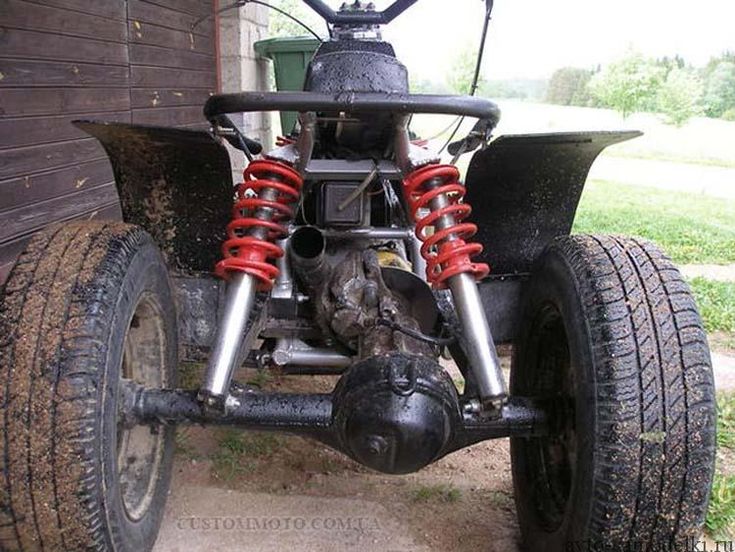
• Be careful when skidding or skidding when practicing at low speed on a flat, smooth road. On extremely slippery surfaces such as ice, drive slowly and be very careful to reduce the risk of slipping or skidding.
• Start decelerating some time before stopping.
• Remember that wet brakes reduce stopping power. Check your brakes after getting out of the water, if necessary, wait a while for the pads to dry out.
• Always be sure there are no obstacles or people behind you when you turn.
• Never exceed the ATV's stated load capacity. The load must be properly placed and securely attached.
• Never start the engine on a slope, as this may cause damage.
• Respect the age guidelines: children under 16 are not allowed to operate the ATV. Do not allow a person who does not know how to operate the ATV in a safe manner to operate the ATV.
• Avoid riding the ATV on paved roads, including driveways, sidewalks, streets, and parking lots.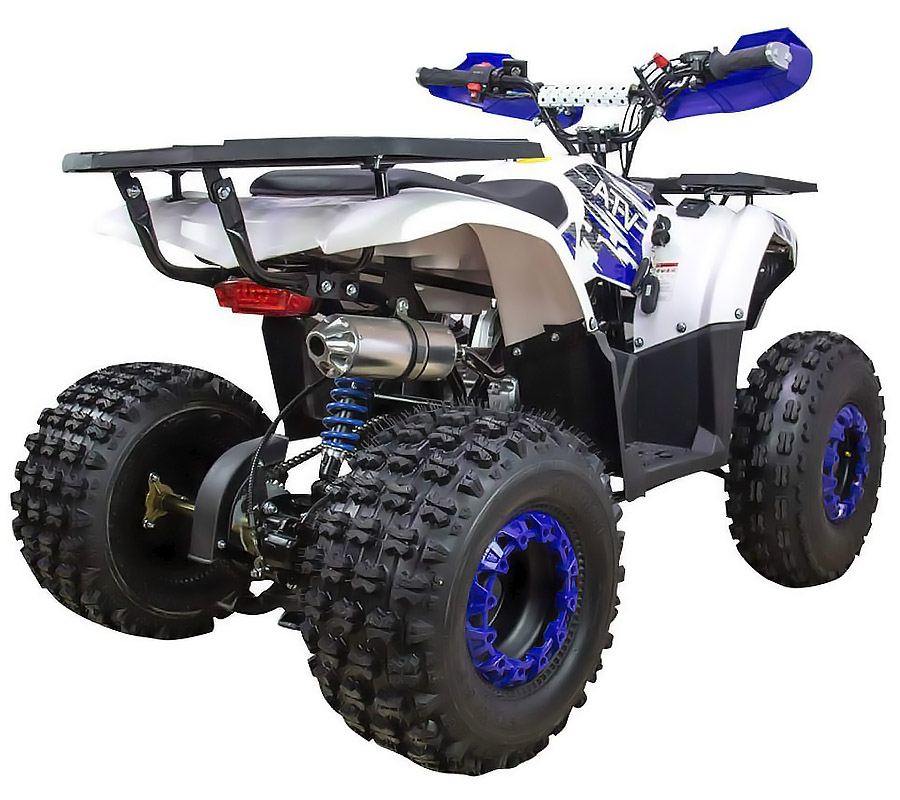
• If you need to stop (frozen helmet glass, hands, etc.) do not wait for the group to stop. Raise your left hand up (stop signal for ATVs following you) and gently come to a stop.
- When riding an ATV, it is necessary to use protective equipment,
- Before the start of operation, it is necessary to be instructed on how to drive an ATV;
- It is necessary to comply with the speed limit, excluding collisions with obstacles, people and collisions with obstacles up to a stop;
- Do not succumb to the provocations of other citizens to participate in races; clashes and other actions that can directly or indirectly cause damage to property and citizens;
- Do not interfere with your actions or inaction to comply with these rules. The technique is very serious, so the rental of ATVs takes place only in the presence of an instructor, for those who love high speed;
-Citizens who have reached the age of 16 and weigh no more than 125 kg are allowed to ride ATVs.